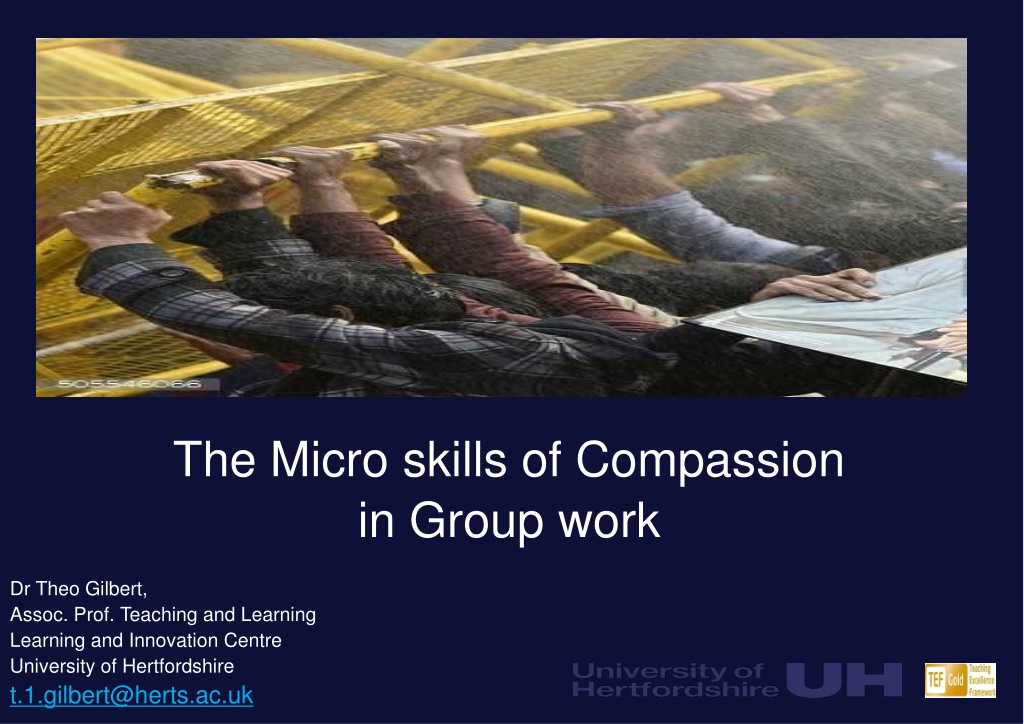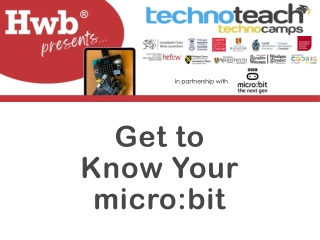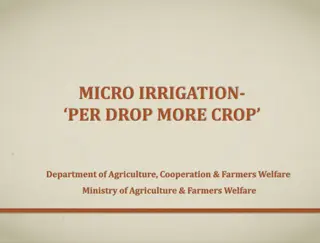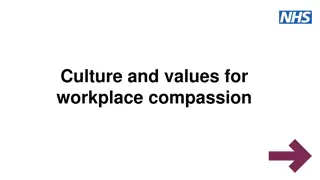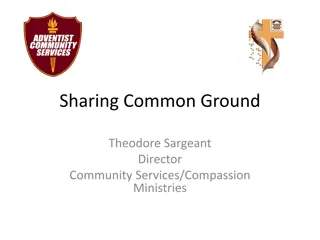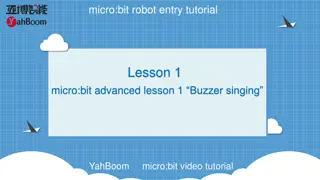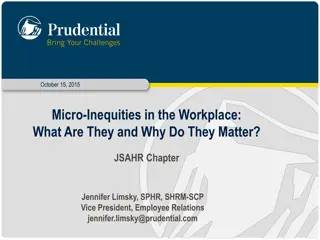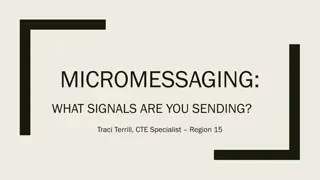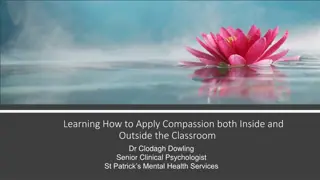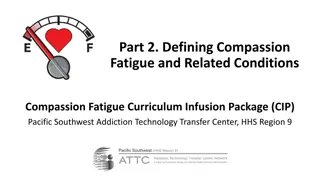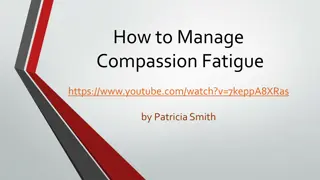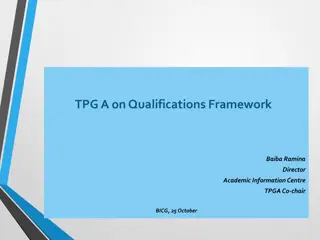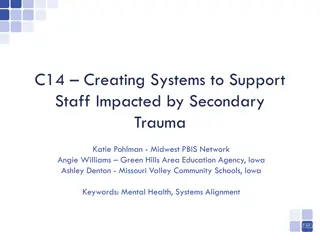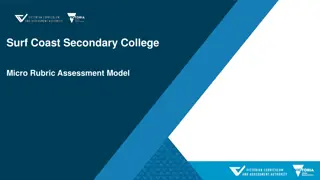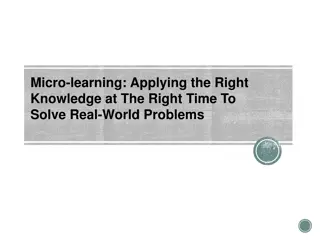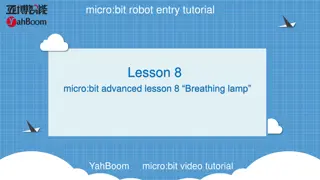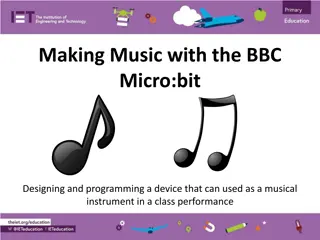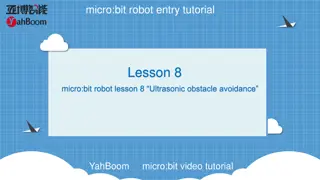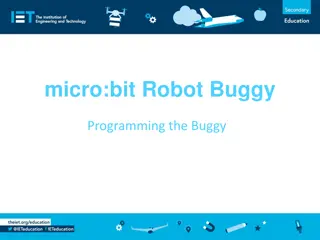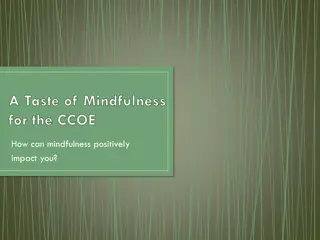The Micro Skills of Compassion in Group Work
Understanding the essence of compassion, its evolution in the brain, and its impact on individual and group dynamics are explored in this insightful content. Addressing issues of distress and disadvantage, the discussion emphasizes the importance of proactive responses to foster a more inclusive and supportive environment in educational settings. Real-world examples and statistics shed light on student experiences and mental health challenges, urging a shift towards a more compassionate and empathetic approach in group interactions.
Download Presentation

Please find below an Image/Link to download the presentation.
The content on the website is provided AS IS for your information and personal use only. It may not be sold, licensed, or shared on other websites without obtaining consent from the author. Download presentation by click this link. If you encounter any issues during the download, it is possible that the publisher has removed the file from their server.
E N D
Presentation Transcript
The Micro skills of Compassion in Group work Dr Theo Gilbert, Assoc. Prof. Teaching and Learning Learning and Innovation Centre University of Hertfordshire t.1.gilbert@herts.ac.uk
Heres what well focus on. 1. Understanding what compassion is. (The Compassionate Mind Foundation). 3. How compassion evolved in the brain. 4. Compassion s saboteur: The reptilian brain s threat system. 5. Two threat-driven behaviours to watch for without blame in team/group work 6. How the science of compassion can transform the quality of individual social and learning experience of group work whether online or offline.
If compassion is not an emotion, what is it? Noticing distress or disadvantaging of oneself and/or others AND Doing something (smart) to reduce or prevent that.
National Union of Students (2009) explored why Black students are less likely to be satisfied with their educational experience and to attain first-class degrees in comparison to their White peers (p4). A survey of 938 black students: with 23 per cent describing it as cliquey 17 per cent as isolating 8 per cent as hostile and respondents often speaking of alienation and exclusion (p5). spawned from inside the classroom feeling left out of discussions and debates (p4)
The Snowflake Generation ? Highest levels of HE student anxiety and depression in the UK (You.Gov, 2016) Highest numbers of student suicides (Office of National Statistics, 2017).
Malik, M. (2018) Machine Learning of Human brain. Towards Data Science. https://towardsdatascience.com/machine-learning-of-human-brain-739ab0419612
If compassion is not an emotion, what is it, including in education? Noticing, (not normalising), distress or disadvantaging of oneself and/or others AND Doing something (smart) to reduce or prevent that.
Group work meetings: 2 recurrent features Group work in the classroom and online
GroTTeo he up work meetings: 2 recurrent features The two most problematic (and common) student-reported behaviours in group/team work.
Group work meetings: 2 recurrent features Non contributors Monopolisers
Language use for international students Strategies for including others Silences: the group s just breathing and thinking Not normalising seeing others talked over. Disrupting cliques and dominating pairs. Bringing others into the discussion: Tone and name. (And tips for being compassionate to yourself too.) Letting people stay out of the discussion when they need to. Thanking each other. The power of gratitude for bonding teams. Checking your own, as well as others body language. Working with non-readers who haven t prepared for the meeting.
Suggestions for students: You could invite them by name into the discussion ask for their opinions. What do youthink, Sara? When they are pushed out of the discussion by confident speakers who like to talk over others, find another chance to invite the shyer ones back in later. Tell them that when they speak, if they suddenly are shy and have no more to say, they can pass the hot potato . That is, they can quickly say to any other student So what do you think, Keisha?
Core Assessment/Marking Criteria for use of the Micro Skills of Compassion in discussion group work (Allocated 10% - 35% of marks in current HE practice) Commendation 69-60%) Category of Assessment Distinction (70% +) Pass (59-50%) Marginal fail F (49-40%) Clear fail (below 40%) * . . 1.1 2.1 Excellent use of eye contact , voice tone and inclusive body language; inviting, encouraging and acknowledging the contributions of others; asking for clarity or elaboration; checking the understanding of the group. Very good use of eye contact, voice tone and inclusive body language; eliciting, encouraging and acknowledging the contributions of others; asking for clarity or elaboration; checking the understanding Good use of eye contact, voice tone and inclusive body language; eliciting, encouraging and acknowledging the contributions of others; asking for clarity or elaboration; checking the understanding Body language signals little interest in what is said by others or may focus on one or two other students only. Either monopolises or makes little contribution to discussion. Speaks too fast, or inaudibly. Body language signals little or no interest in what is said by others or may focus on one other student only. Either monopolises or makes little contribution to discussion. Speaks too fast, or inaudibly. 2.2 Interpersonal and discussion skills.
Two Key questions to begin the module. 1. What do I do in this seminar/group work to develop my fellow students social and learning experiences that they most value in me? 2.What do my fellow students do in this seminar/group work to develop my social and learning experiences that I most value in them?
S13: And .you realise, "Well no, we re also responsible for making sure other people have things to say and want to talk." S13 PG female, second year/run of stage three, focus group transcript, p9, lines 294- 297
Academic Outcomes The same sample of students (n=38) completed both assignments on a single UG Business module 80 70.93 68.5 70 67 66.25 69.62 65.41 60 56.25 50 53.35 Percentage marks 40 30 20 10 0 Local Black (n=8) Local Ethnic Minority (n=17) Essay International (n=5) Local White (n = 8) Seminar Mean percentage marks awarded per student 'category for critical thinking
Compassion focused Pedagogy for interculturalising students When I go into seminars, I find any other Muslim people there . Most of the others, I m probably not gonna talk to them to be honest. So I was thinking, Oh my God. What if no-one talks to me? But as soon as I got into a group, I was fine, I was fine We just got into the discussion and it flowed really well. (S28)
Compassion for higher cognitive processing and interdependent self. We were sort of analysing I know I was. I was like watching each other. What s the body language like? (BAME S24) I felt not as one person, but I felt as a person within an entity and the entity was my group . like we re all focused on it [the task]. (BAME S29)
Academic Results: After Compassionate micro skills taught for group work (228 computer science students) With thanks to Dr Martina Doolan, NTF
Impact of Compassion focused Pedagogy on student outcomes on their piece of work, I would listen to how they achieved this how valued their input is. I also made sure I was showing gratitude. (S185) .during discussions I always made sure to leave spaces for other people. (S100) I was worried being the oldest person and the only non-native English person .having ten years of working experience with people from different cultures and backgrounds, I never found it as smooth as this time. Outside of university, we re still hanging out together. (S110)
An at glance overview for teaching staff:
STEP THREE ASSESSED SEMINAR 1. The final small group discussions, at the end of the module, are filmed and each student is assessed according to criteria seen in slide 10, above. STEP THREE - - FINAL ASSESSED SEMINAR FINAL STEP TWO - - HOMEWORK 1. After each weekly lecture, students read independently on the topic of the lecture. - - IN WEEKLY SEMINARS 2. In small groups, students share the research they have each done, presenting for discussion one at a time. 3. Tutor facilitates students to support each other with STEP TWO HOMEWORK: STEP ONE ONE 1. What is compassion? 2 . Small group whole group consensus on: STEP ONE - - SEMINAR ONE SEMINAR IN WEEKLY SEMINARS a. Noticing unhelpful seminar behaviours. b. How to address
Im convinced that its compassion I'm closer to this group of students than to any group I've taught in years. Many of my students are saying it s the most exciting learning experience they ve had at university. They didn't know, they said, that learning could be like this This is life-changing work. Prof Karen Edwards, University of Exeter
The feedback from this session was absolutely phenomenal. I had about 30 emails from students saying how much it had affected them; how much they were more compassionate to each other. Debbie Sharp, Midwifery, University of Hertfordshire I showed my Business PG students the compassionate micro skills to use in their group work. They were so grateful I could have cried. Norton-Bertram-Smith, University of Aberdeen
https://compassioninhe.wordpress.com See Join Us in the above website (of free resources). We are compassion-in HE colleagues from around 60 universities so far, working to support each other in getting the science of compassion on the HE curriculum. Dr Theo Gilbert Associate Professor, Learning and Teaching Learning and Teaching Innovation Centre University of Hertfordshire t.1.gilbert@herts.ac.uk Skype: theogilbert58 Phone: 07890 296148
For more info on this: Duhigg, C. (2016). What Google learned from its quest to build the perfect team. The New York Times Magazine. Available at: http://www.nytimes.com/2016/02/28/magazine/what-google- learned-from-its-quest-to-build-the-perfect- team . Gilbert, T., Doolan, M., Beka, S., Spencer, N., Crotta, M & Davari, S. (2018) Compassion on university degree programmes at a UK University: The neuroscience of effective Group work. Special Issue: Neuroscience of learning and development: Implications for the design and evaluation of student learning and development. Journal of Research in Innovative Teaching and Learning ISSN: 2397-7604 Emerald Publishing. https://doi.org/10.1108/JRIT-09-2017-0020 Gilbert, T. (2016) Assess compassion in Higher Education? Why and how would we do that? LINK, 2(1). Available at: www.herts.ac.uk/link/volume-2,-issue-1/assess-compassion-in-higher-education-how-and-why-would-we-do-that/ Gilbert, T. (2017b) When looking is allowed: What compassionate group work looks like in a UK university. In P. Gibbs (Ed.)The Pedagogy of Compassion at the Heart of Higher Education. Springer: London. Chapter 13, pp 189-202. Gilbert, T. (2018, Jan 19)Embedding and assessing compassion on the university curriculum. University of Hertfordshire Video file: Available YouTube: 21:12. Available at: https://www.youtube.com/watch?v=3jFVTCuSCOg Gilbert, T (2017) Career advice: should universities award credit for compassion? Sept, 21, 2017 Times Higher Education Supplement. Available at: https://www.timeshighereducation.com/news/career-advice-should-universities-award-credit-for-compassion#survey- answer National Union of Students (2010) Race for Equality. Available at: https://www.nus.org.uk/PageFiles/12350/NUS_Race_for_Equality_web.pdf
